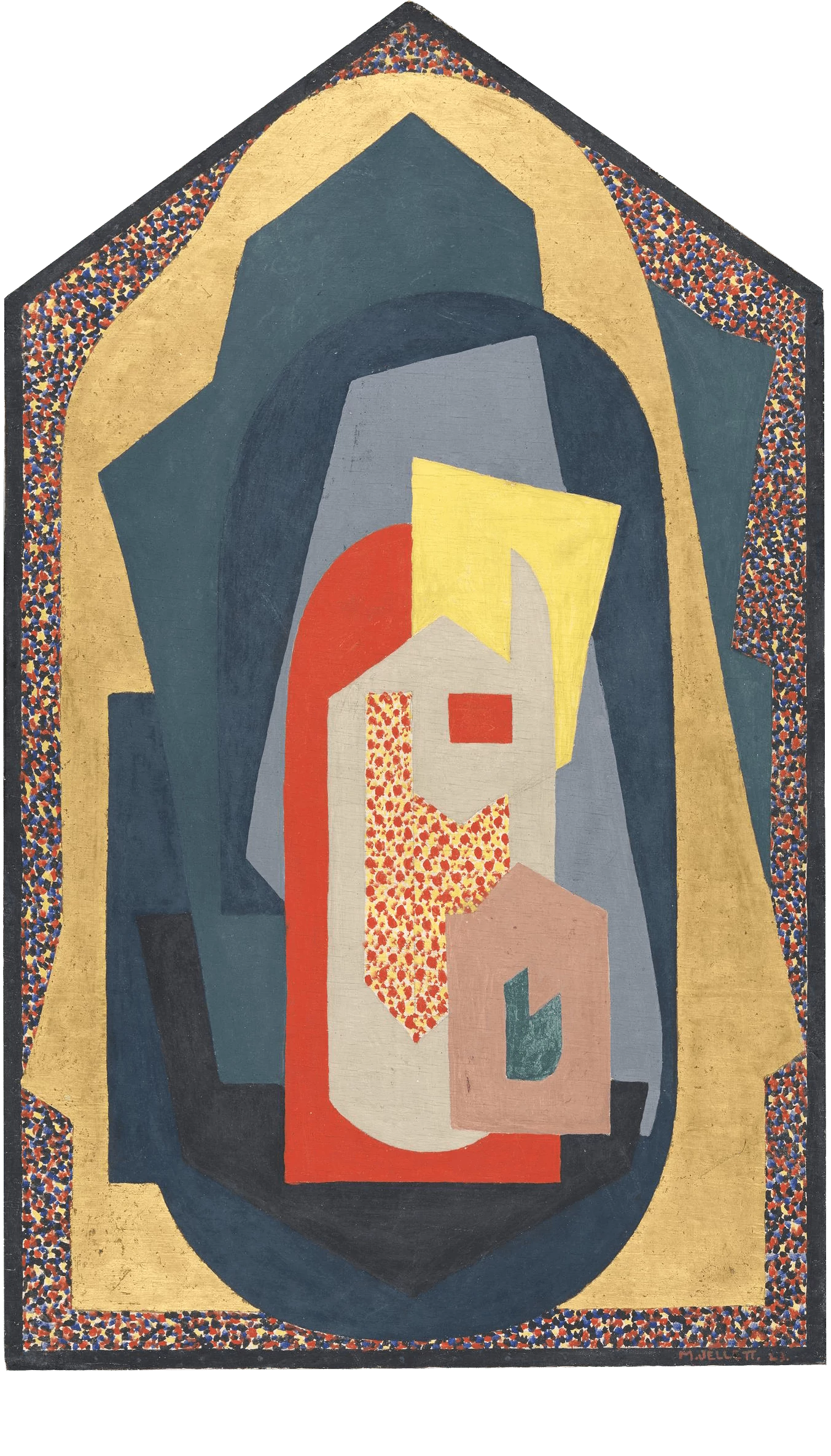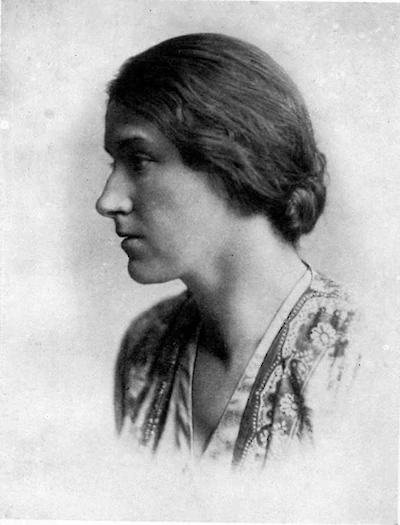Mainie Jellett
The woman who brought modern art to Ireland




The year was 1923, and the 26 year old artist Mainie Jellett returned to her home city of Dublin. Ireland, reeling from the tumult of the Irish Civil War, was not ready for the art she brought back with her. Jellett had just completed a whirlwind art education. Two years at the Westminster Technical Institute in London where she learned to paint in the Impressionist style, and two years in Paris, working with André Lhote and Albert Gleizes, absorbing the techniques of the new style called Cubism.
The Society of Dublin Painters had thrown an exhibition, and Mainie Jellett submitted an abstract work called Decoration. It’s a vertical painting in the style of traditional pentagonal altarpieces, painted in tempera on a wood panel, yet this artwork was scarcely traditional. A bold explosion of overlapping color fields, Jellett’s take on the religious icon was modern, strident, and loudly cubist.
Queue the critical firestorm. The art reviewer for The Irish Times was baffled, writing: “they are all squares, cubes, odd shapes and clashing colors. They may, to the man who understands the most up-to-date modern art, mean something; but to me they presented an insoluble puzzle.” Prominent art critic George Russell called Jellett “a late victim to Cubism in some sub-section of this artistic malaria.” In a turn of phrase that foreshadowed the Nazi prohibition against degenerate art, another critical referred to Decoration as ’sub-human art.'
With the gift of hindsight it’s clear that Mainie Jellett touched a critical nerve precisely because her artwork is so successful. Decoration now holds a place of honor at the National Gallery of Ireland, and her career was beginning to blossom. Four years later the Irish Times changed its tune, heralding Jellett as “the only serious exponent in this country of the ultra-modernist school of painting.” For the next two decades, Jellett worked closely with her friend Evie Hone, creating work that was shown in the Irish section of the exhibition at the 1928 Olympic Games, and honored her Catholic faith through beautiful abstractions of the Madonna and Child.
It took time to win the heart of Ireland, but Mainie Jellett was deeply devoted to her country, and believed in the role that artists play in representing their nation. In 1943, a year before her death, Jellett co-founded the Irish Exhibition of Living Art, a celebration of unconventional Irish artists. In one of her last published writings, An Approach To Painting, Jellett described her desire to represent the spirit of her country and its people, writing:
“The idea of an artist being a special person, an exotic flower set apart from other people is one of the errors resulting from the industrial revolution, and the fact of artists being pushed out of their lawful position in the life and society of the present day. … Their present enforced isolation from the majority is a very serious situation and I believe it is one of the many causes which has resulted in the present chaos we live in. The art of a nation is one of the ultimate facts by which its spiritual health is judged and appraised by posterity.”
...
Got questions, comments or corrections about Mainie Jellett? Join the conversation in our Discord, and if you enjoy content like this, consider becoming a member for exclusive essays, downloadables, and discounts in the Obelisk Store.